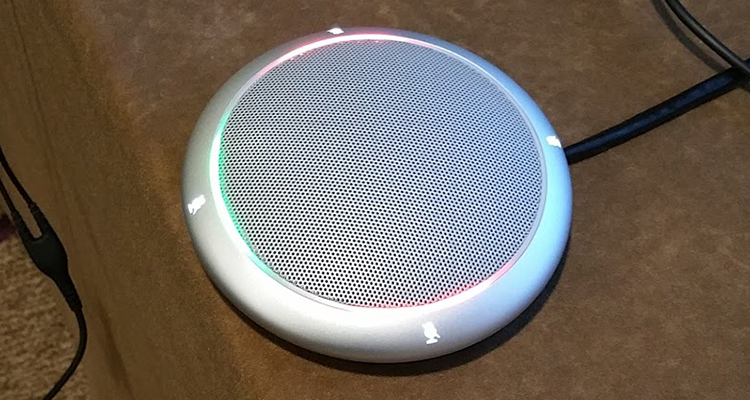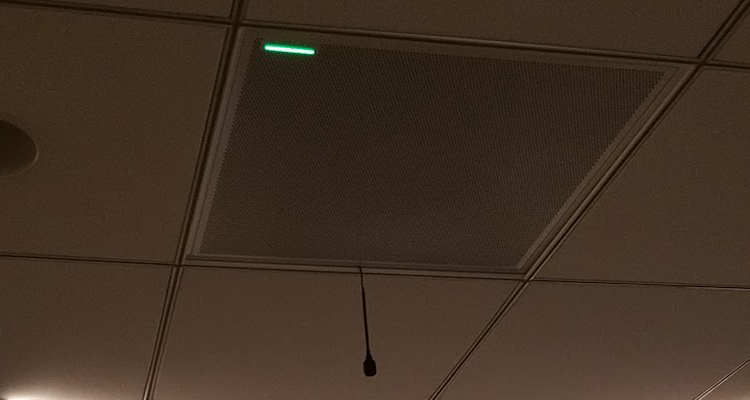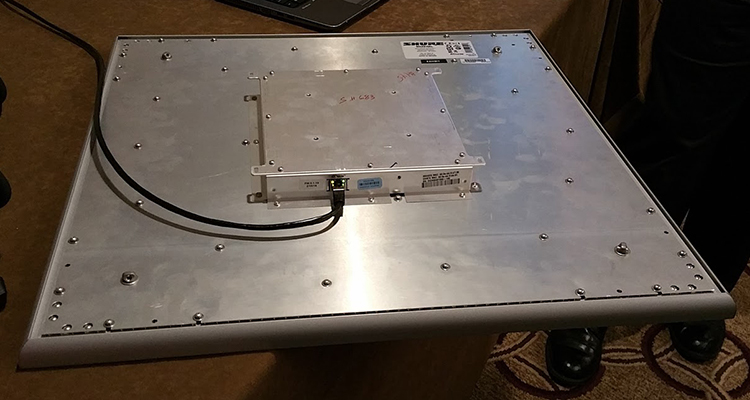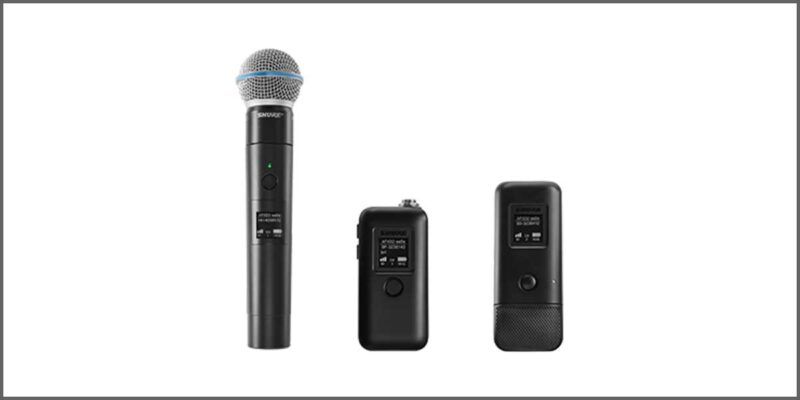A Morning with Shure and Musings on AV Conference Room Topology
 Yesterday, I had the opportunity to attend a demo of the new Microflex Advanced microphones from Shure. These are digital beam-steering microphone arrays designed for tabletop (the MXA310) and ceiling (MXA920) placement. They are high-end, solidly built products which fit very well into some design philosophies and perhaps not as well with others. Both are high-performance, feature rich, high cost solutions.
Yesterday, I had the opportunity to attend a demo of the new Microflex Advanced microphones from Shure. These are digital beam-steering microphone arrays designed for tabletop (the MXA310) and ceiling (MXA920) placement. They are high-end, solidly built products which fit very well into some design philosophies and perhaps not as well with others. Both are high-performance, feature rich, high cost solutions.
The Products
The first microphone we saw was the MXA310. It is an approximately four-inch diameter round microphone array featuring a multi-hue segmented LED ring and four capacitive-touch mute buttons. The feature on which Shure focused the most is the multiple configurable patterns including omni, cardioid, bi-directional (two cardioids pointing in opposite directions) and what they call a “toroid” pattern. The latter is what it sounds like: a donut-shaped coverage area intended to reject sound from directly overhead, as one would experience from HVAC noise or a projector (though I’m doubtful that this microphone would be the appropriate choice in many rooms large enough to use front projection). The overhead rejection was claimed to be -25dB and was demonstrated using a white-noise app on a smartphone held aloft above the mic with a selfie-stick. At my request they moved the noise source radially out from above the table center so we could see how tight the rejection was; the null was certainly strongest directly above the mic array, with ambient noise quickly returning once it passed a roughly thirty-degree threshold. A browser-based interface is available to configure polar patterns, the behavior of the light-ring, and the mute buttons.
 The second device they showed is the MXA910 ceiling microphone array. This is a two-foot by two-foot square which can drop into a ceiling grid, hang via aircraft cable, or use a standard VESA mount. The name is configurable with up to eight “beams” or lobes, each of which can be narrow (35 degrees), medium (45 degrees) or wide (55 degrees). Here the web-interface is quite useful, allowing one to see the “footprint” of the individual beams at the designated listener height. A “self-configure” utility is always available, allowing beams to be automatically configured by listening to talkers in the room. While this is not the first multi-element ceiling microphone available it is, to my knowledge, the only one allowing this measure of configurable coverage.
The second device they showed is the MXA910 ceiling microphone array. This is a two-foot by two-foot square which can drop into a ceiling grid, hang via aircraft cable, or use a standard VESA mount. The name is configurable with up to eight “beams” or lobes, each of which can be narrow (35 degrees), medium (45 degrees) or wide (55 degrees). Here the web-interface is quite useful, allowing one to see the “footprint” of the individual beams at the designated listener height. A “self-configure” utility is always available, allowing beams to be automatically configured by listening to talkers in the room. While this is not the first multi-element ceiling microphone available it is, to my knowledge, the only one allowing this measure of configurable coverage.

Some Common Choices
Neither product has analog audio outputs or local control inputs. Instead, each has a single RJ45 connector for Dante audio as well as control and management. Each is also more than a microphone, or even a group of microphones. The MXA310 allows creation of four zones while the MXA920 supports eight. If one were to look at the network with Dante controller, one would find five and nine out flows, respectively. The “extra” channel is from an on-board automixer. This is especially useful if one is bringing the audio into a software-based conferencing product lacking in support for multiple microphone inputs; it is less useful in DSP-based systems where there’d already be an automixer.
Disappointingly, each only has a single network connection. This could lead to challenges if, for organizational or security reasons, audio transport and control networks require physical rather than logical separation. A second connection — particularly on the larger ceiling model — would be welcome.
What does this mean?
I said earlier that this had me thinking about design choices. There are, broadly speaking, two alternatives to the “classic” AV conference room design featuring matrix switching, VTC appliances and a standalone in-rack DSP and control processors. The first is to centralize functionality in a data center, using either an appliance or software running on a server. This is the direction, for example, which QSC is taking with its enterprise cores. Their answer to a small conference room is to centrally locate a single processor to serve multiple spaces.
The second option is to deploy smart devices with just enough on-board processing for the required task. In a simple conference room there might not be need for any more audio processing than the on-board auto-mixer in an MX920 and, perhaps, some EQ in a smart network-based amplifier. Such a system eliminates the need for standalone DSP products altogether.
The centralization options tend to scale up very easily — especially if most of the functions are software-based. Individual room systems with this design philosophy consist of simple network-based I/O devices connected to central processing and control. The problem with this model are two-fold: first, by centralizing the “brains” of the system one creates a single point of failure. Second, while it easily scales up, it is a not a type of solution which scales down very efficiently. If one is building one hundred rooms, then centralization creates efficiencies. If one is fitting out a single space then remote location of system elements is just silly.
The second choice — a looser network of distributed “smart” devices — is where the Shure products shine. By adding just enough processing at the source to make a simple system work the MXA series replaces an automixer. Yes, it’s still the priciest item in the room, but it might be the only high-cost bit of tech one needs in a simple teleconference room. With the ceiling microphone disappearing into a 2×2 grid, with a small form-factor PC or small VTC Codec behind a flat panel, we’re getting closer to that magical state at which technology is invisible to the user.
The outlook?
These products can fit into a variety of spaces — but at a relatively high cost. For users who care about the experience and who have the budget for it they can be an excellent fit for a variety of spaces. The challenge will come, as it always does, from lower-cost lower-performance alternatives. Will there be a temptation to hang a pendant microphone overhead rather than use a digital array? I’m certain there will be.
This is the bigger challenge we face; AV contract costs have dropped precipitously as we move from hardware to software. In the new world of low-cost PC-based solutions it becomes challenging to justify what appears to be a microphone costing as much as all of the other components combined.
Overall, these are interesting and well-performing products which show us something of how Shure sees the AV world developing. I look forward to seeing what comes next from them.





